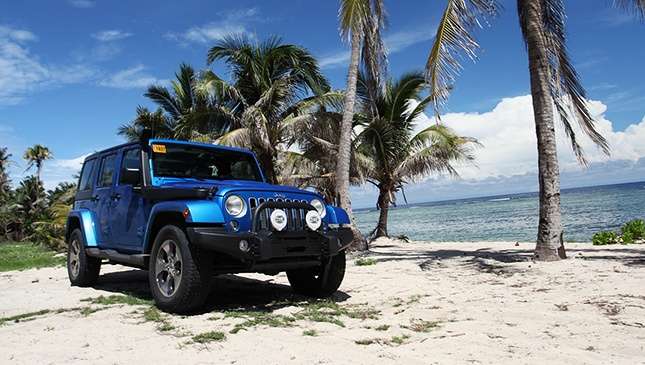
Bringing your ride to the sand can be tons of fun, providing drivers with wide open spaces where they can open up the throttle and play around on top of the soft stuff. But of course, as with any off-road adventure, diving into unfamiliar terrain without knowing what you're doing can result in disaster. With that in mind, here are a few things to remember when driving in the sand.
1) Keep your windows up. Nothing can be more disorienting and messy than when sudden burst of dust and dirt comes blowing into the vehicle, messing with your attention and concentration while driving on fine sand.
2) Use the correct tire pressure. I recommend that tire pressure be brought down to not lower than 16 psi. This provides your tires with a wider footprint and distributes the vehicle's weight on a larger surface, allowing the tires to bite the sand better.
*Do be aware though that there are risks in lowering tire pressure, including the possibility of 'unbeading' the tire from the wheel when doing sharp turns at speed.
3) Momentum is key. Continuous forward motion is essential when driving on sand. When making turns on sand I advise never to make small circle turns even on high tire pressures. A constant wide moderate speed turn is advised. When going up a sandy slope make sure you have enough momentum to assist the engine in making it to the top. Use just the right amount power during climbs—too much will get you in trouble (as you'll read below), too little will not be enough to get you over.
4) Practice restraint with the accelerator. Starting off on sand must be done in the smoothest possible manner. Do not hammer the accelerator as there's probably a small wall of sand in front of your wheels; this can make your engine stall. Often, newbie off-roaders make a mistake by abruptly stepping on the accelerator on a low speed gear when they begin to slow down. Abrupt acceleration will only dig your tires deeper into the sand, creating more resistance. Gradually accelerate without having to shift to a lower gear so as not to lose forward momentum.
* Always make sure that your tires are pointing forward when starting on sand.
5) Stay in control even when stopping. When stopping on sand do try to come to a controlled slow halt, as this will minimize the amount of sand buildup in front of your tires. I advise that if you will stop, make sure that the vehicle is facing down a slope. The pull of gravity on the downside of the slope will assist you in moving forward.
6) Know your vehicle. Most 4WD vehicles have different gearings, engine power and torque figures. Strike a balance between all of these, as (again) too much torque applied on the wheels will bury the tires.
7) There's tech for this, too. On some modern 4WD vehicles like the Land Rover Discovery, Ford Everest and Jeep Cherokee, you'll find settings or dials which you can configure into "sand mode". This makes the vehicle throttle more responsive, and allows its traction control system to adapt. Use it if it's there and impress your friends.










